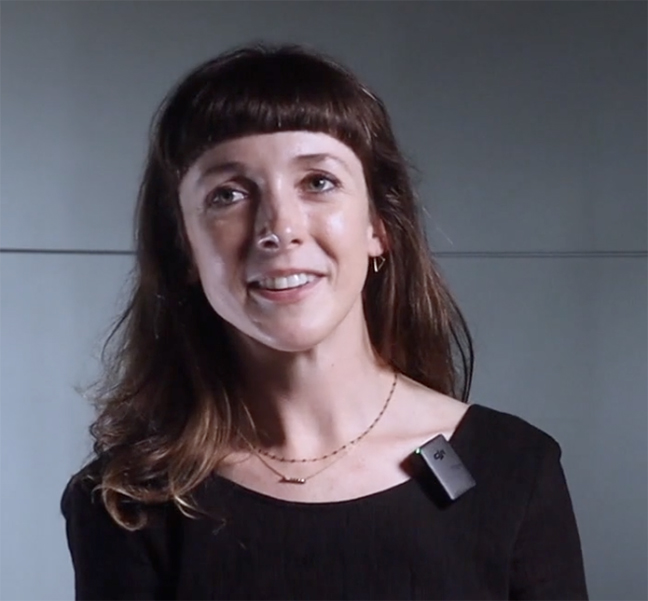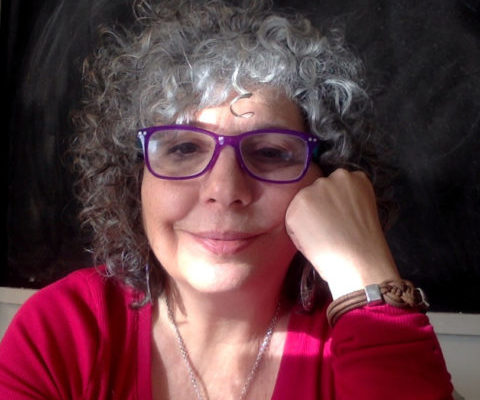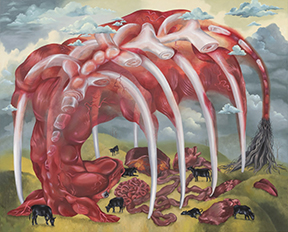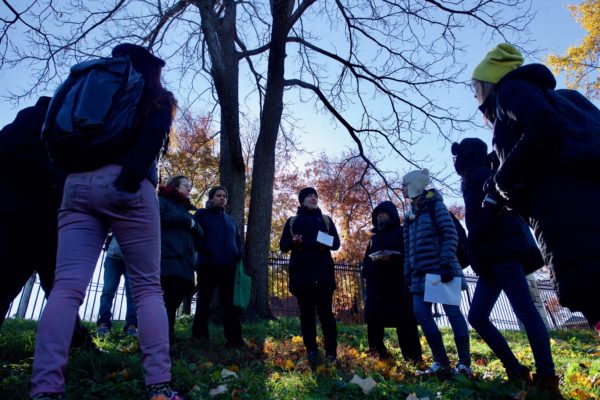CAF Associate Brooke Rucker talks to designer and researcher Leslie Ruckman (left), who with scientist and artist and CAF grantee Gal Nissim, produced “Swan Song” (2021) and “For the Birds: An Edible Art Workshop” (2022), both presented at Pioneer Works in Brooklyn, New York. You can watch the video here.
For the Birds and Swan Song: An Interview with Leslie Rucker
Brooke Rucker (BR): Your projects “Swan Song” and “For the Birds” revolve around birds with an emphasis on cities and cities as a shared environment for birds and people. Could you tell us more about the relationship between these two works and why you find birds so interesting?
Leslie Ruckman (LR): I think what was really interesting to us about birds is that they’re these creatures that are living in wilderness areas. So, a lot of the birds that visit New York City are actually traveling from quite far distances and environments that are really different from the urban landscape. And they actually come to us and visit us in our urban spaces and are somehow capable of thriving in both environments. We were really interested in this idea of this blended boundary, that human environments are just as much a part of nature as forests or parks or these kinds of areas. And we want to believe that there’s kind of a division. The animals are over there; the people are over here. But that division actually melts down. That also led us into exploring what it means to be supporting nature in an urban habitat. So, our previous project, “Swan Song,” was really looking at the urban environment and the kind of dangers that it presents to birds; especially bird–window collisions, is a really huge, huge problem. It kills up to a billion birds every year, recent studies are finding. So, we tackled it from a few angles.
One aspect that we did was these UV murals; we were playing with this idea of the seen and the unseen. So, for birds, the window glass is unseen. For us, UV light wavelength is unseen; but it is seen to birds. Also, in Swan Song, we melted down glass and recast the bodies of individual songbirds that were collected by the New York City Audubon as part of their volunteer work, like reincarnating them out of the material that killed them. In our more recent project, For the Birds, I guess both of Swan Song’s projects, were really looking at migration as this seasonal change. It started as an idea for a food event, and then we were, “What if instead of feeding the people, we’re feeding the birds?” This idea of building these really large-scale seed sculptures as a way to say, “It’s migration season, they need to come down into our shared space and refuel, so let’s feed them, and also give people an opportunity to see them.”
BR: What do you hope to awaken in people when they experience your art, whether with Swan Song or with For the Birds?
 LR: We were in this place of feeling a lot of sadness and a lot of sense of dread and doom about the future. And we felt, “That is not a creative space to be in.” I think what we hope to awaken in people is to say, “There are so many creatures that share these spaces,” and then to awaken a desire for a relationship with those creatures.
LR: We were in this place of feeling a lot of sadness and a lot of sense of dread and doom about the future. And we felt, “That is not a creative space to be in.” I think what we hope to awaken in people is to say, “There are so many creatures that share these spaces,” and then to awaken a desire for a relationship with those creatures.
BR: How do you see your role as an artist, scientist, and activist?
LR: Part of my role is to be similar to a therapist that helps you walk through these different emotions. I think the best work is when the creator needs to create in order to process their own emotions, but it also helps other people arrive at a similar place. I think another part of my role is really pulling from different disciplines and finding these really interesting overlaps between things that—maybe if you’re purely focused on art and the art world, or if you’re purely focused on science—you don’t necessarily reach out into these topic areas and try to find overlaps in the same way. So, I think part of my role is to really represent all these different threads and tendrils, but to find this truly interdisciplinary sweet spot. Also, in terms of my role of working with, especially, inter-species stuff: I think a big part of that role is to really understand the nonhuman creatures. How do they perceive the world? What brings them joy, or what does it mean to take care of them? What does it mean to invite them to interact in these different works? How can we be sure that we’re doing no harm, at the very minimum, and then, at the ideal end, that they receive some sort of benefit from the exchange?





